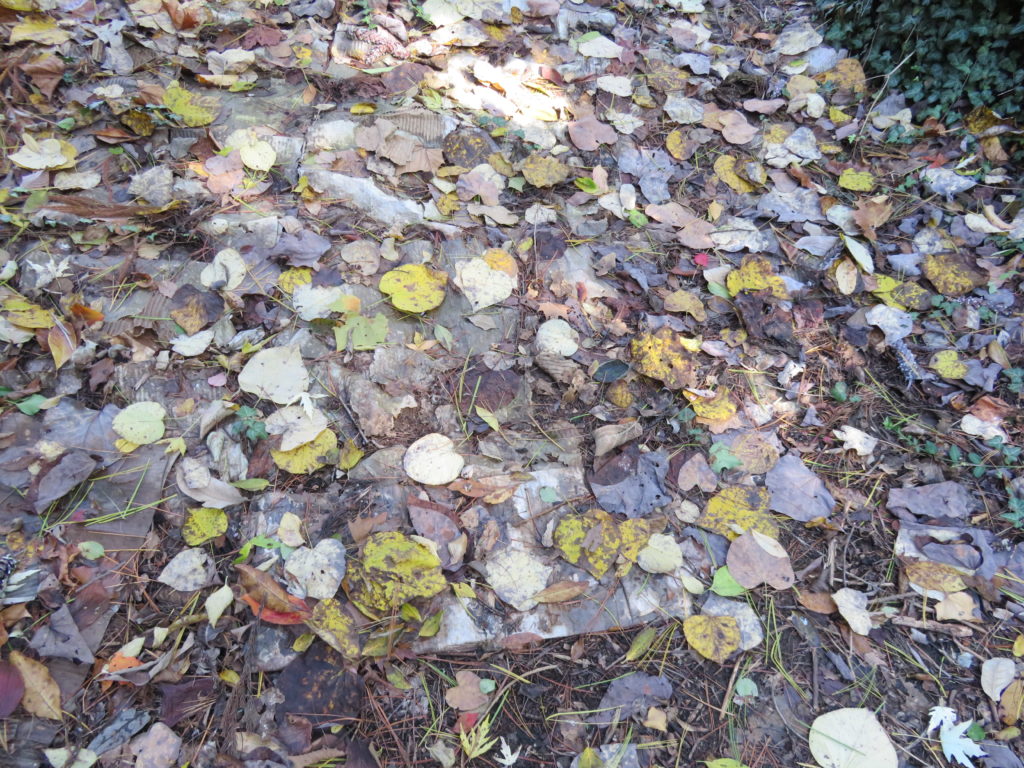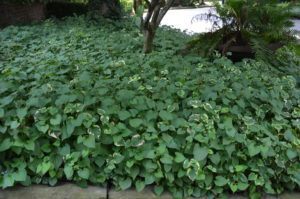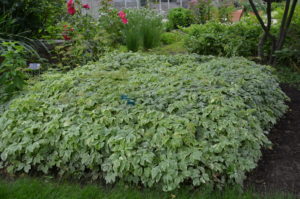Some aggressive perennials like Chameleon plant (Houttuynia cordata), variegated Bishop’s weed (Aegopodium podagraria), along with many woody briars can be extremely difficult to eliminate from a landscape area or garden bed.
If a weedy garden bed contains no desirable plants, you can over spray weeds with glyphosate, a nonselective herbicide.(Roundup™ is common trade name). This chemical does not kill all weed species and repeated applications may be needed on difficult weeds. Hand digging is a more laborious option.
Broadleaf herbicides (weedkillers) include products labelled 2.4-D, Triclopyr® and Trimec™. The latter herbicides manage many kinds of plants, including broad-leaved weeds in the lawn. Grasses are not injured. Be careful! Winds may allow herbicide to drift onto trees, shrubs, and perennials resulting in plant damage.
Depending on the weed species, it may require repeated applications over a year for the targeted area to become weed-free. Some weeds may be leafless (defoliated), yet their thick roots and stems may still be living. In small weedy patches, try painting the herbicide solution on the targeted weed with a small paint brush.
Mechanical barriers such as spun-bond weed fabric, and multi-sheets of newspaper or cardboard also choke out tough perennial and woody weeds such as English ivy (Hedera helix), crown vetch (Coronilla varia), wild brambles (Rosa spp.+ Rubus spp.), Japanese honeysuckle (Lonicera japonica), and purple wintercreeper (Euonymus japonicum ‘Coloratus’).




 Posted in
Posted in 
